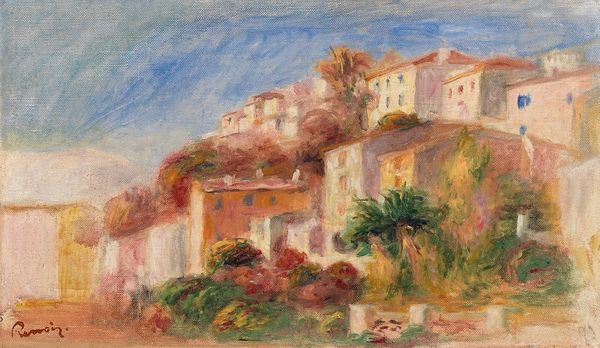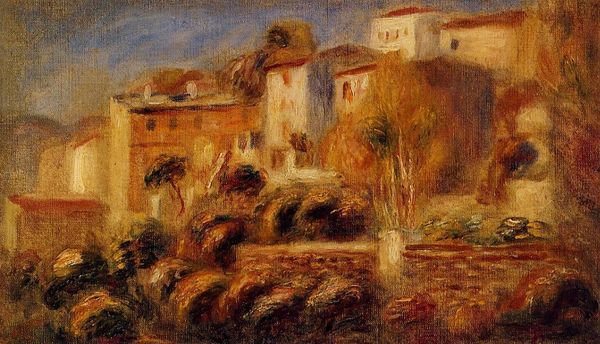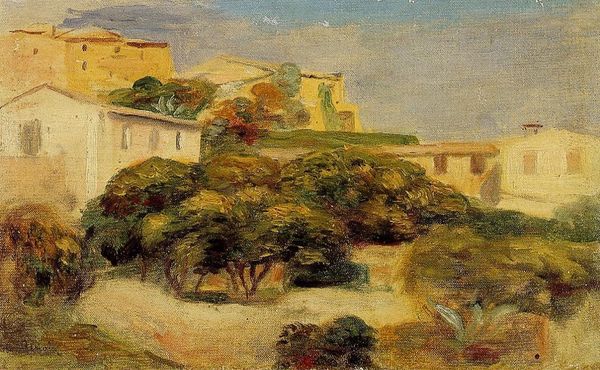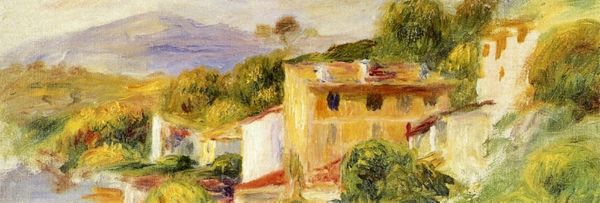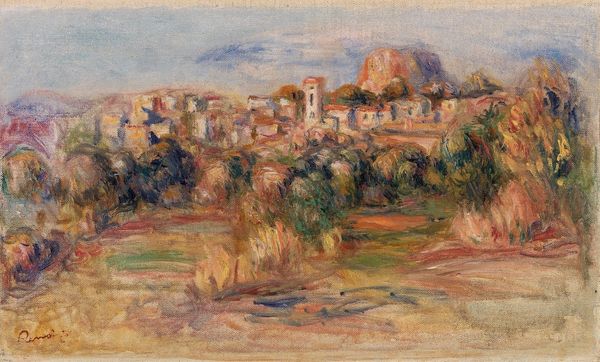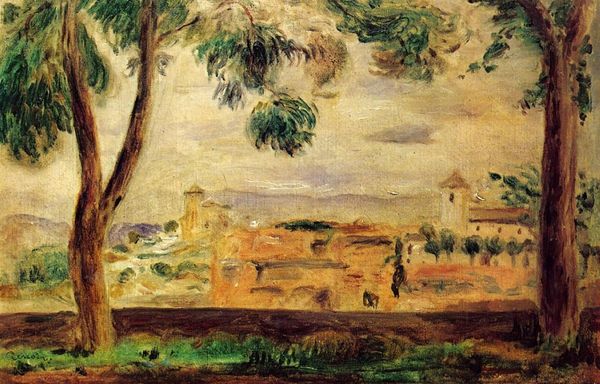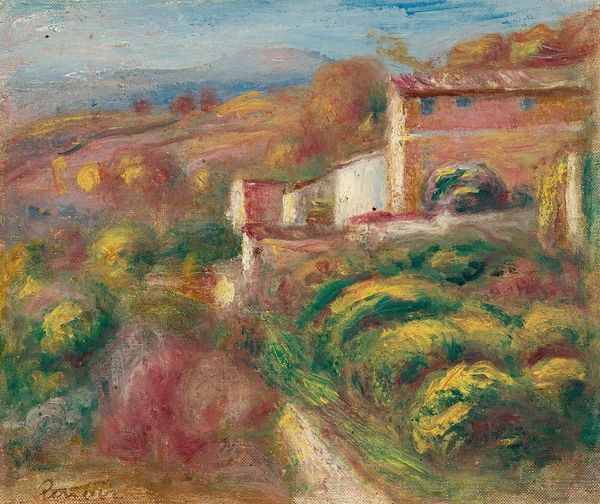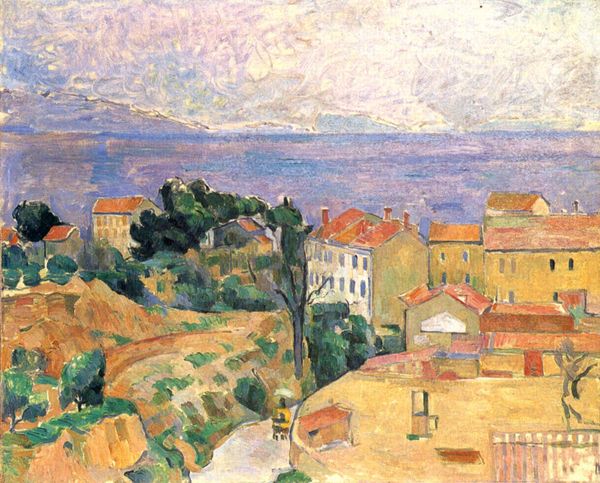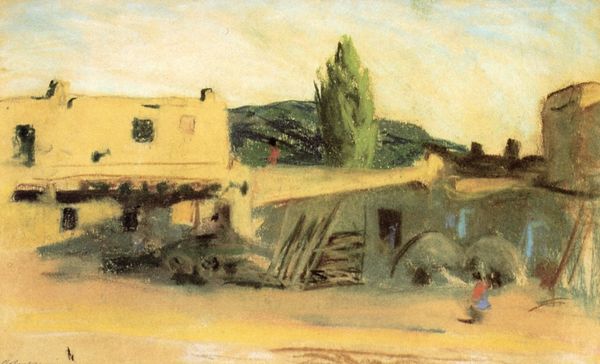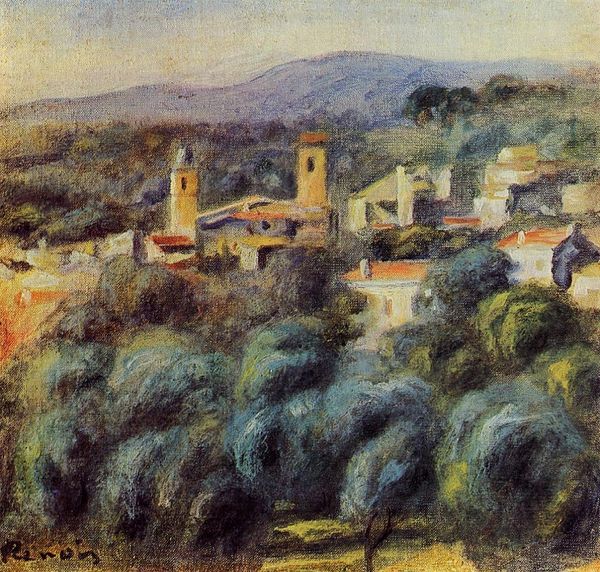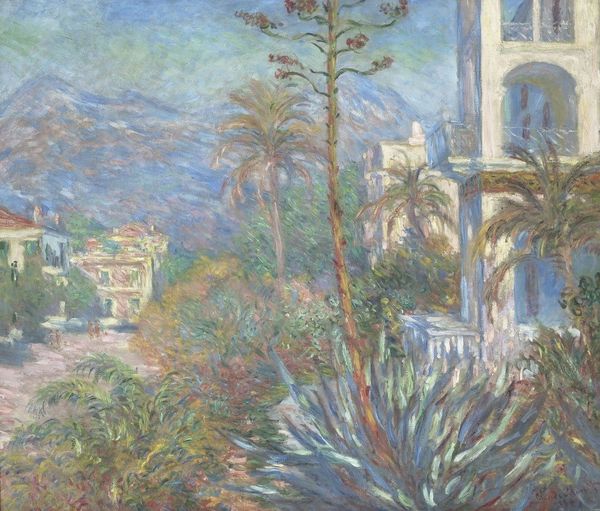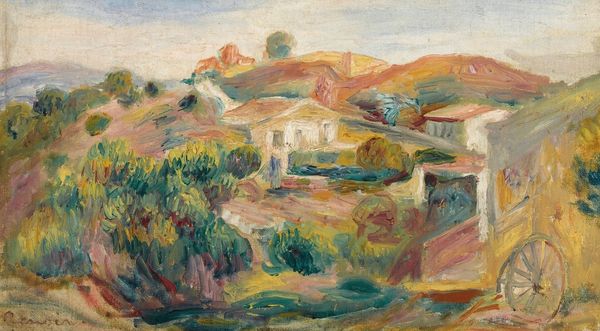
#
abstract painting
#
impressionist painting style
#
holy-places
#
impressionist landscape
#
possibly oil pastel
#
oil painting
#
fluid art
#
acrylic on canvas
#
seascape
#
painting painterly
#
watercolor
Copyright: Public domain
Editor: So, we’re looking at Renoir's "Terraces at Cagnes," painted in 1905. The canvas seems to be heavily layered with oils, creating a really rich, almost tactile surface. I'm struck by the contrast between the seemingly casual brushstrokes and the defined architectural elements. What's your take on it? Curator: I'm interested in Renoir's choice to depict this landscape – a site not just of leisure, but of labor. Consider the terraces themselves, requiring constant maintenance, a testament to human intervention. The materials he employed – oils, likely manufactured pigments – are themselves products of industrial processes. How does this tension between the 'natural' and the industrially produced impact your reading of the artwork? Editor: That's a really interesting point about the labor involved! I hadn't considered how the 'natural' scene is, in itself, a product of work and human alteration of the land. Curator: Exactly! And think about the viewers he expected to consume this image. They were likely members of the bourgeoisie, detached from the realities of agricultural labor, enjoying the fruits of that very labor. The painting, then, becomes a commodity itself, part of a cycle of production and consumption. Do you see how Renoir, perhaps unintentionally, implicates both the subject and the viewer within a web of material relations? Editor: I think so! So, rather than just being a pretty picture of a landscape, it's actually commenting on class and how different groups experience and interact with their environment? Curator: Precisely! It forces us to question whose labor is made visible, whose is obscured, and the means through which we, as viewers, engage with these representations. Editor: That’s given me so much to think about regarding how we consume art and the often-invisible work behind what we see. Curator: Indeed, and by considering the materials and social context, we reveal layers often missed.
Comments
No comments
Be the first to comment and join the conversation on the ultimate creative platform.
